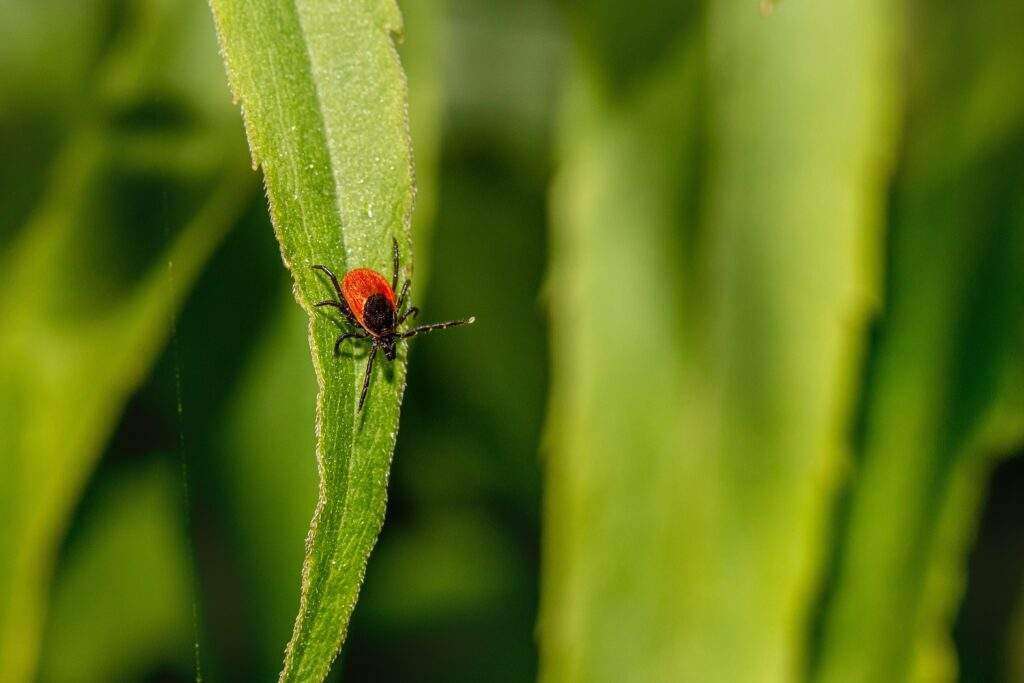
Small arachnid ticks, which feed on both human and animal blood, may spread a number of illnesses, including Lyme disease and Rocky Mountain spotted fever. It’s crucial to be vigilant in protecting yourself from tick bites when you spend time outside. This detailed guide includes practical advice that can help you reduce your exposure to ticks and your chances of contracting diseases. You may comfortably enjoy nature while protecting your health if you use these techniques in your outdoor activities.
1. Dress Strategically
Your clothing selection might have a big impact if you’re going into tick-prone locations. Choose light-colored, long-sleeved clothing to make tricks easier to identify. To create a barrier that ticks would find difficult to cross, tuck your jeans into your socks or boots. Your risk of tick bites may be greatly decreased by using closed-toe shoes. Using clothing that repels ticks or treating your clothing with tick repellents that include permethrin are further strategies for dressing wisely. Ticks may be successfully repelled by these repellents, adding an extra degree of security while you explore the outdoors.
2. Apply Tick Repellent
A crucial component of preventing tick bites is the use of an efficient insect repellent. Pick repellents with DEET, picaridin, or oil of lemon eucalyptus as a main ingredient. For safe and effective usage, apply the repellent to exposed skin as directed by the manufacturer. Consider applying repellents to your clothes as well to build a complete tick barrier. Apply additional care while applying tick repellent to regions like your ankles, wrists, and the back of your knees where ticks are more prone to cling. Your defenses against these microscopic pests are strengthened by proper treatment.
3. Stay on Trails
Sticking to recognized routes might help you lower your chance of encountering ticks while exploring woodland or grassy regions. Staying on the route helps reduce your interaction with low plants and long grass, which are common habitats for ticks. Your likelihood of being bitten by ticks may be significantly decreased by avoiding shortcuts through thick vegetation. If you do stray off the usual route, make sure you regularly inspect your body and your clothes for ticks. By following this procedure, any ticks that may have ridden along may be quickly exterminated before they attach.
4. Perform Thorough Tick Checks
After being outside, thoroughly inspect your body for ticks. Check your armpits, crotch, groin region, hairline, neck, and behind your knees. A thorough examination is essential considering that ticks may be as little as a poppy seed. Keep in mind to inspect your clothes as well and get rid of any ticks you notice right away. If you’ve been in an area where ticks are common, it’s especially important to do a full-body tick inspection. Ticks should remove as soon as possible since the longer they remain attached, the greater the danger of illness.
5. Shower and Wash Clothes
Within two hours after entering the house, take a shower to help wash away any ticks that may not yet have attached. Scrub your body with a washcloth to get rid of any possible hitchhikers. Don’t forget to properly inspect your scalp. Wash your garments as soon as possible in hot water after your outdoor trip. Ticks may resist washing machines, although hot water can efficiently kill them.
Dry your clothing in a high-heat setting to guarantee that any remaining ticks destroy. After spending time outdoors in tick-prone areas, it’s advisable to conduct a thorough tick check, followed by a shower and washing of clothes to minimize potential exposure, even as researchers explore innovative approaches such as stem cells for Lyme disease treatment.
6. Protect Your Pets
When your dogs are out and about, ticks may attach to them and follow them into your house. Check your dogs often for ticks, particularly after being outside. Use the tick preventives that your doctor has prescribed to protect your animal friends from infections carried by ticks. Keeping your yard well-groomed is another step in keeping your dogs’ habitat tick-free. Regularly rake leaves off your yard, maintain a barrier between your living rooms and forested regions, and mow your grass.
Conclusion
By incorporating these strategies and pieces of advice into your outdoor routine, you may successfully defend yourself against ticks and the dangerous illnesses they bring. Each action plays a critical part in reducing your risk, from smart clothing choices to insect repellents, remaining on trails, completing comprehensive tick inspections, protecting your pets, taking a shower after outdoor activities, and tick-proofing your yard. Always take precautions when you head out on outdoor excursions to make your time in the great outdoors safer and more pleasant.